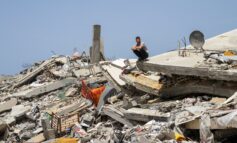|
Dubai can serve as a model for growth elsewhere |
In discussions with friends and colleagues here in Dubai, the conversation often turns to “the Dubai model” — fast growth, bold expansion, rapid implementation of plans, efficient service delivery, openness to the world. A recurring discussion concerns whether Dubai teaches the Arab world something important, and whether the Dubai model can or should be replicated in other countries. A more useful discussion would be about the nature of urbanism, and how the role of the city in Arab culture and history will adapt to our new globalized world.
This pertains to fast-growing Gulf cities like Dubai, Doha, Abu Dhabi, Sharjah, and Manama, and ambitious new city projects in Saudi Arabia, as well as the revitalization of urban areas in cities like Beirut and Amman. Arab planners, leaders and citizens must grapple more deliberately with the question of what makes a great Arab city, rather than leaving this urban hyper-growth to the whims of commercialism and the profit motive of private developers.
What are the enduring characteristics that make a city meaningful, rather than only comfortable and efficient? And what do Arab cities in the Gulf and elsewhere offer beyond rapid growth?
The Gulf cities seem to have three of the five essential elements of great, meaningful and durable cities: efficient infrastructure, cosmopolitan populations comprising many nationalities and expanding economic opportunities. The two missing elements are cultural production and pluralistic politics.
Political life will take time to develop naturally in the small monarchies and emirates of the Gulf. In the meantime, cultural and intellectual production is probably the criterion that will help answer the question of whether spectacular Arab Gulf urbanism will cross the threshold between super efficient construction project management and the building blocks of the human spirit.
A closer look at the “Dubai model” suggests that other than its unprecedented speed of development over a single generation, it has followed the same path that transformed Beirut from a small town to a globalized Arab city, from the 1860s to the 1960s. The trajectory of cumulative services these two cities offered their surrounding region in their growth years has been virtually identical: entrepôt and trade services, regional business offices, splendid consumerism, a bit of smuggling and sanctions-busting, serious banking and quiet money laundering, quality professional services (engineering, advertising), tourism and discreet sensual pleasures, easy interaction with the world, plenty of new job opportunities, education on a wide scale, a major international airport and a sense that the growth years would continue forever.
It is useful to grasp the distinctions and similarities between contemporary and historical Arab urban growth if we want to see Beirut, Cairo, Damascus and other cities regain their balance and role in the world; also if we hope to see Dubai, Doha, Abu Dhabi, Bahrain and other fast-growing Gulf Arab cities achieve their full potential and contribute to the collective knowledge and heritage of human civilization.
The long, rich context of Arab urbanism is a powerful and humbling guide. Cosmopolitan urbanism has defined the Middle East for nearly 5000 years, since the third millennium BC. The recipe for a great, meaningful, satisfying and enduring city was written long ago. The blend of economy, infrastructure, politics, pluralistic citizenry, links to the world, and cultural production determines two critical dimensions of urban life: Do citizens remain passive, eager consumers, or do they become producers who contribute new ideas and goods to the collective human endeavor? Does a town grow into a true city whose urbanism prompts the production of cultural ideas in the form of the arts, journalism, books, research institutes, and centers for the discussion of ideas and the resolution of problems and challenges?
None of the spectacularly growing cities of the Gulf region have yet achieved the institutional critical mass that allows them to produce and export ideas — they still prefer to erect marvelous buildings. Those buildings, however, are an essential first step. It is potentially significant that the Gulf region is now investing heavily in universities and museums, perhaps signals that these societies wish to take the next critical step towards great Arab urbanism: the production of cultural, technological and intellectual knowledge that comes only from free minds that interact in an open, respectful, pluralistic environment.
The people and leaders of Dubai might consider defining their “model” not in terms of what they have built with concrete and steel, but rather in terms of what their new urbanism can now contribute to the rest of the world in the realms of ideas, knowledge, culture and universal human norms. I, for one, am cheering for them to succeed.
Rami G. Khouri is editor-at-large of The Daily Star, and Director of the Issam Fares Institute for Public Policy and International Affairs at the American University of Beirut, in Beirut, Lebanon. Copyright © 2008 Rami G. Khouri





Leave a Reply